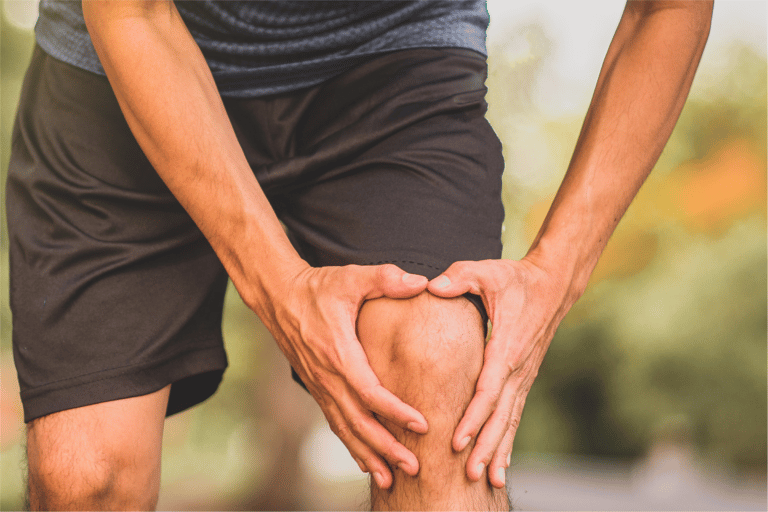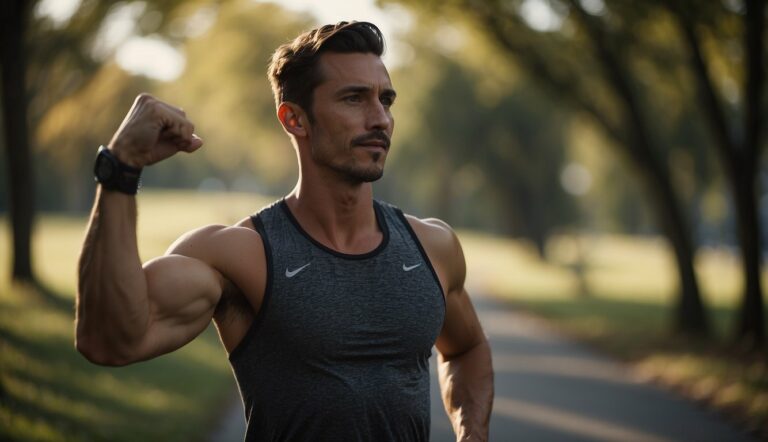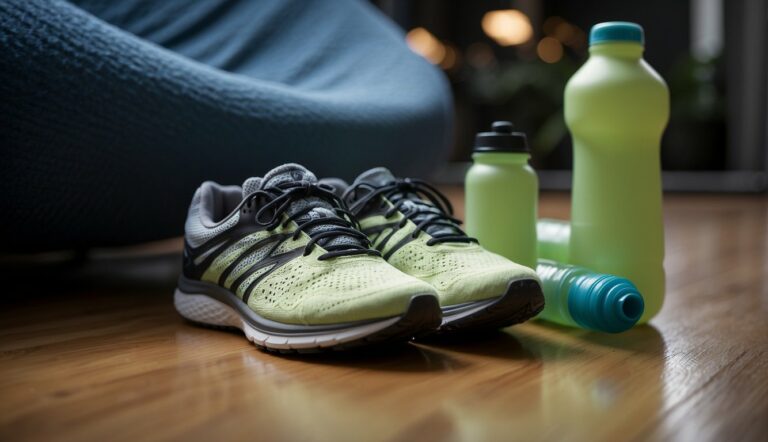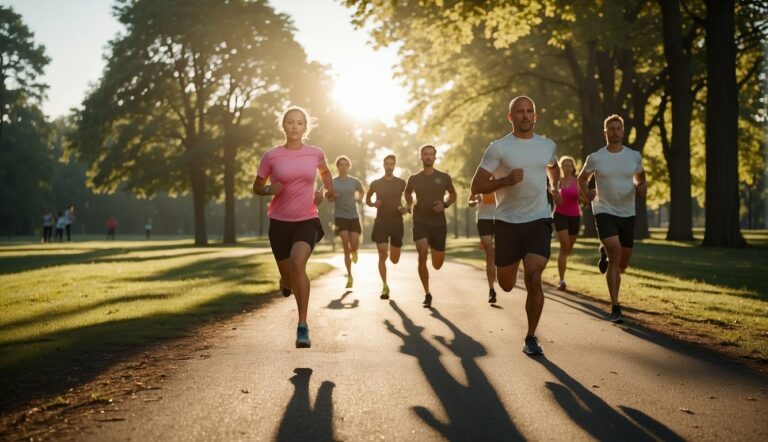10 Dynamic Warm-Ups to Help Prevent Injuries in Cold Weather This Winter
Runners may find the cold weather daunting and the risk of injury a genuine concern. Cold muscles are less flexible and more prone to strains and sprains. That’s why a dynamic warm-up, which effectively raises the body’s temperature and prepares the muscles and joints for the rigors of a run, is especially crucial during the colder months.
A dynamic warm-up consists of movements that mimic the activity you’re about to perform, in this case, running, which helps activate the specific muscle groups used during your workout. By incorporating dynamic stretches into your pre-run routine, you can enhance muscle performance, increase range of motion, and reduce the likelihood of injury.
Let’s explore five dynamic exercises tailored for runners to get your body ready to hit the pavement or trail, no matter the temperature.
1. Leg Swings
Warming Up the Wheels
Muscles Involved: Leg swings target the hip flexors, glutes, hamstrings, and adductors, which are all vital for a runner’s stride.
How to Execute: Stand alongside a wall or a sturdy object for balance. Begin by swinging one leg forward and backward, gradually increasing the range of motion. Keep your upper body relaxed and your back straight. After about 20 swings, switch to side-to-side swings to target the inner and outer thighs. Perform the same number of swings on each leg.
Practical Tips:
- Start with a smaller range of motion and gradually increase as your muscles warm up.
- Keep the movements controlled; momentum should come from your muscles, not gravity.
- Stay upright and avoid leaning too far forward or back, which could strain your back.
Recommended Video: For a visual guide, check out the “Dynamic Leg Swings” video on YouTube, which demonstrates the proper technique for this exercise.
2. Walking Lunges
Stepping Into Warmth
Muscles Involved: Walking lunges engage the quadriceps, hamstrings, glutes, and calves, while also challenging your balance and core stability — all essential components for running.
How to Execute: Begin by standing with your feet together. Take a step forward with one leg, bending both knees to lower your hips until both legs are bent at about a 90-degree angle. Ensure your front knee is directly above your ankle, not pushed out too far, and your back knee is hovering just above the ground. Push up through your front heel to return to the starting position and step forward with the opposite leg to continue the movement.
Practical Tips:
- Keep your torso upright and your core engaged throughout the movement.
- Don’t let your front knee extend past your toes to prevent knee strain.
- Take your time with each lunge to maintain balance and proper form.
Recommended Video: For an instructional guide, the “Proper Walking Lunge Form” video on YouTube is a great resource to ensure you’re performing this dynamic stretch correctly.
3. High Knees
Pumping Up the Pace
Muscles Involved: High knees are a dynamic exercise that targets your calves, quadriceps, hamstrings, and glutes while also engaging your core and promoting cardiovascular endurance.
How to Execute: Stand with your feet hip-width apart. Begin by jogging in place, lifting your knees as high as possible with each step. Pump your arms in sync with your legs to maintain balance and momentum. Focus on lifting your knees up rather than driving them forward, and aim for a brisk pace that gets your heart rate up.
Practical Tips:
- Keep your back straight and your core engaged to prevent arching your back as your knees come up.
- Land softly on the balls of your feet to reduce impact on your joints.
- Aim for a height where your thighs are parallel to the ground, or as close to that as possible.
Recommended Video: The “High Knees – Running Warm-Up Exercise” video on YouTube provides a clear demonstration of the high knees exercise, including common mistakes to avoid.
4. Arm Circles
Loosening Up the Upper Body
Muscles Involved: Arm circles warm up the shoulders, deltoids, triceps, and biceps, which are important for maintaining good running form and arm swing.
How to Execute: Stand with your feet shoulder-width apart and extend your arms out to the sides at shoulder height. Start with small circles, gradually increasing to larger circles as you feel your shoulder joints warming up. Perform the circles both clockwise and counterclockwise, ensuring you work the muscles evenly.
Practical Tips:
- Keep your shoulders down and away from your ears to avoid creating tension in the neck.
- Start with slow, controlled circles and gradually build up speed as your muscles warm up.
- Breathe evenly throughout the exercise, and don’t hold your breath.
Recommended Video: For a visual and detailed explanation, refer to the “How to Do Arm Circles and Shoulder Circles” video on YouTube, which covers proper arm circle technique.
5. Bodyweight Squats
Foundation for a Strong Stride
Muscles Involved: Bodyweight squats primarily target the quadriceps, hamstrings, and glutes. They also engage the core and lower back, which are crucial for maintaining good posture and stability while running.
How to Execute: Stand with your feet slightly wider than shoulder-width apart, toes slightly turned out. Keep your arms straight out in front of you for balance. Initiate the movement by pushing your hips back and bending your knees, as if sitting down in an invisible chair. Lower down until your thighs are at least parallel to the floor, ensuring your knees do not bow inward or extend past your toes. Press through your heels to return to the starting position.
Practical Tips:
- Keep your chest up and your spine neutral throughout the movement.
- Engage your core to help maintain balance and protect your lower back.
- Focus on depth and form rather than speed to fully activate the muscle groups.
Recommended Video: For guidance on proper form, check out the “How To Do Squats For Beginners” video on YouTube, which walks you through the squat technique step-by-step.
6. Inchworms
Stretch and Strengthen from Head to Toe
Muscles Involved: Inchworms are a full-body exercise that stretches the hamstrings and calves, warms up the core, and activates the shoulders and arms.
How to Execute: Start in a standing position with your feet hip-width apart. Hinge at the waist and place your hands on the ground in front of your feet. Walk your hands forward until you are in a plank position with your shoulders directly over your wrists. Engage your core, then walk your feet towards your hands, keeping your legs as straight as possible. Continue the movement by walking your hands forward again to return to the plank position.
Practical Tips:
- Keep your movements slow and controlled to maximize the stretch in your hamstrings.
- If you can’t reach the ground without bending your knees, go as far as you can and work on increasing your flexibility over time.
- In the plank position, ensure your body forms a straight line from your head to your heels.
Recommended Video: For a demonstration of the inchworm exercise, view the “Inchworms – Exercise How-to – Workout Trainer by Skimble” video on YouTube, which provides a clear example of the movement.
7. Butt Kicks
Firing Up the Hamstrings
Muscles Involved: Butt kicks primarily target the hamstrings and also engage the quadriceps and calf muscles, which are key for propelling you forward during a run.
How to Execute: Stand with your feet hip-width apart. Begin by jogging in place, then flex the knee and lift your heel to kick your buttocks with each step. Pump your arms at the same time for balance and to mimic the natural running motion. Keep your upper body upright and your movements fluid.
Practical Tips:
- Focus on bringing your heel up to your buttocks rather than pushing off too strongly with the balls of your feet.
- Maintain a moderate pace that allows you to feel the hamstring contraction with each kick.
- If balance is a challenge, you can perform this exercise near a wall or a sturdy object for support.
Recommended Video: For a visual guide on how to perform butt kicks, watch the “How to Do Butt Kicks | Boot Camp Workout” video on YouTube, which explains the correct technique.
8. Lateral Shuffles
Boosting Side-to-Side Agility
Muscles Involved: Lateral shuffles work the gluteus medius and minimus, abductors, and adductors, which are important for stabilizing the hips and knees during running.
How to Execute: Begin in a slight squat position with your feet shoulder-width apart. Keeping your hips low, take a step to the side with your leading foot, then follow with the trailing foot, maintaining the squat position. Shuffle smoothly from side to side for a set distance or time, keeping your toes pointed forward and your movements controlled.
Practical Tips:
- Keep your weight on the balls of your feet to stay agile and responsive.
- Avoid crossing your feet over each other as you shuffle.
- Engage your core to maintain stability and protect your spine.
Recommended Video: Check out the “Lateral Shuffle Exercise Guide” video on YouTube for a comprehensive breakdown of lateral shuffles, including common mistakes to avoid.
9. Torso Twists
Engaging the Core and Spine
Muscles Involved: Torso twists target the muscles of the core, including the obliques, as well as the muscles surrounding the spine, promoting flexibility and rotation which are beneficial for a runner’s upper body movement.
How to Execute: Stand with your feet shoulder-width apart and your knees slightly bent. Keep your arms out to the sides or place your hands on your hips. Rotate your torso to one side, then the other, in a controlled motion, allowing your gaze to follow the movement. Keep your hips facing forward to isolate the twist to your upper body.
Practical Tips:
- Engage your core throughout the movement to support your lower back.
- Move within your comfortable range of motion, and do not force the twist.
- Breathe out as you twist to each side to deepen the stretch.
Recommended Video: For proper form and technique, watch the “How to Do Standing Torso Twists” video on YouTube, which will guide you through the exercise.
10. Dynamic Pigeon Stretch
Opening the Hips for Stride Length
Muscles Involved: This dynamic version of the pigeon stretch targets the hip flexors, glutes, and piriformis, which are crucial for maintaining a strong and fluid running stride.
How to Execute: Begin in a push-up position. Bring one foot forward and lay it flat across your body just behind your hands, allowing the opposite leg to stretch out behind you. Gently lower your hips toward the ground to feel a stretch, then push back up and return to the starting position. Alternate legs with each repetition.
Practical Tips:
- Keep your movements fluid and avoid bouncing to reduce the risk of injury.
- If you cannot bring your leg fully across the body to start, go as far as you can while maintaining good form.
- Focus on a gentle stretch rather than forcing your leg into position.
Recommended Video: To see a dynamic pigeon stretch in action, view the “Dynamic Pigeon Stretch – Exercise Library” video on YouTube, which demonstrates how to perform this stretch safely and effectively.






